Cornish Pasty Recipe Ground Beef No Cook Meat


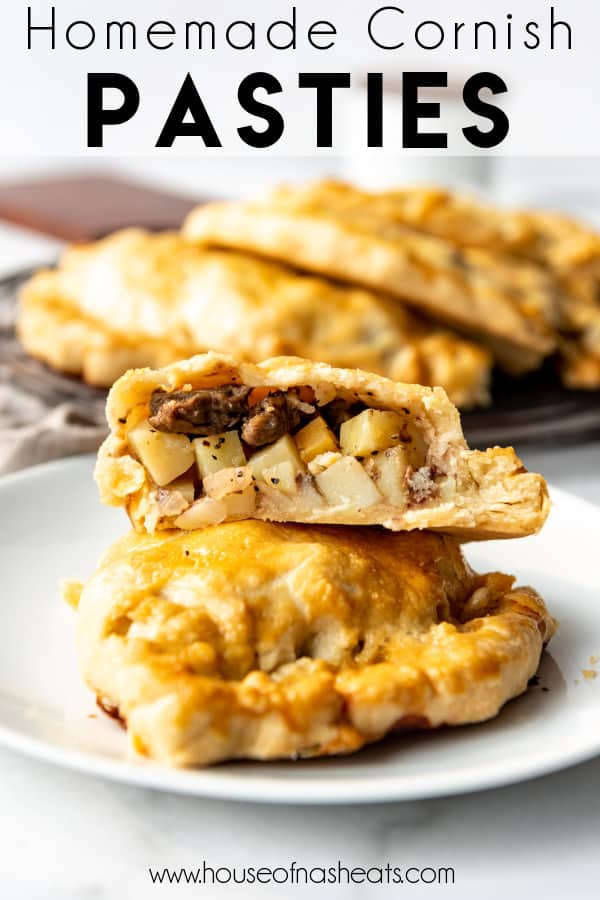
Cornish Pasties are traditional handheld meat pies filled with beef, potato, onion, and rutabaga wrapped in a savory crust. They originated in Cornwall, England where miners would take them to work for a hearty, satisfying midday meal, but nowadays they are also popular in Upper Michigan, where many Cornish miners came to work, as well as other parts of the world.
Looking for a savory, satisfying dinner idea? Try our Pork Tenderloin Sandwich or Homemade Sloppy Joes next!
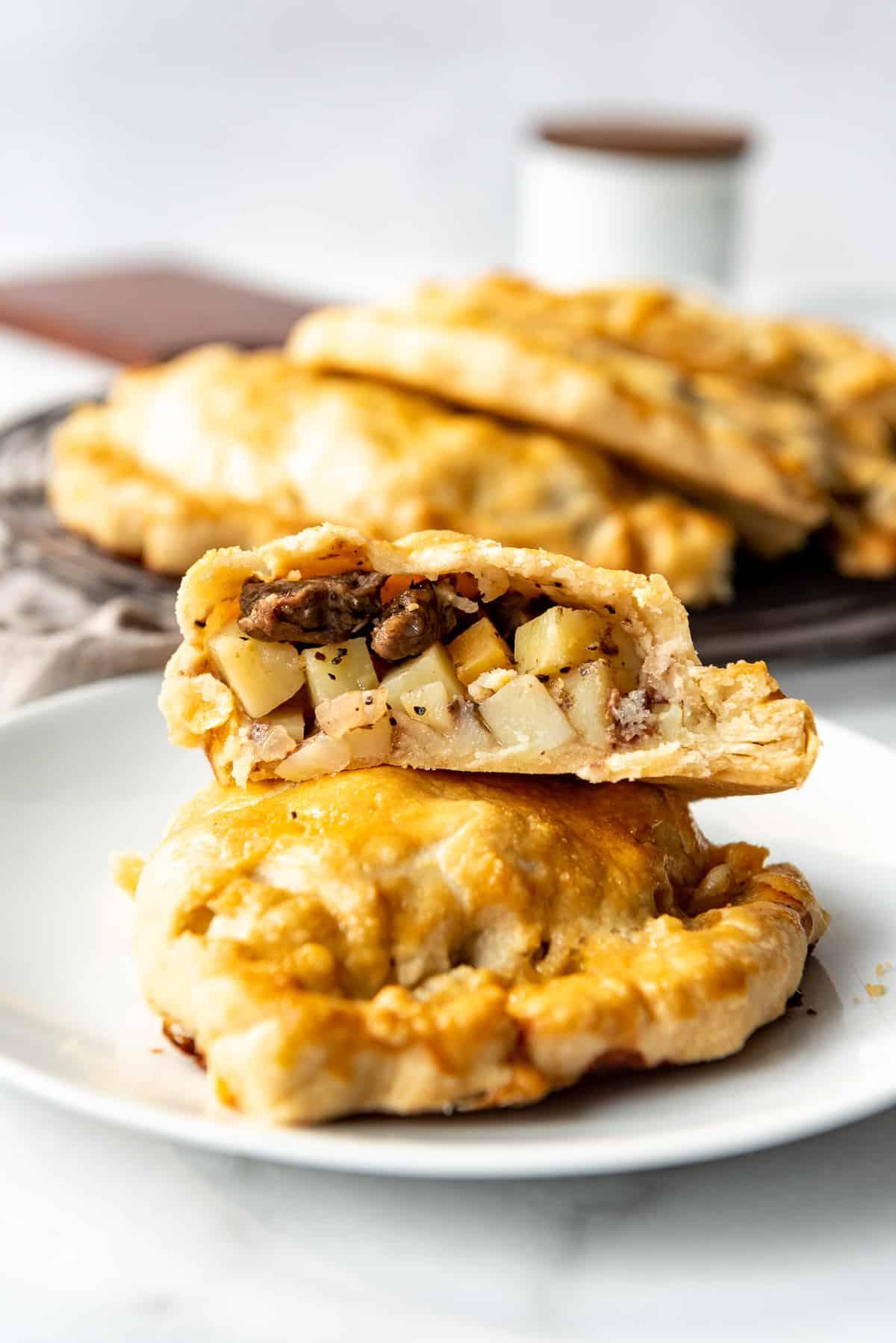
If you have never had a pasty (rhymes with nasty), it's handheld British comfort food that first originated back in the 12th century. You may have heard about them in Harry Potter or seen them on the Great British Bake-Off!
Pasties were popular with miners because they could hold the thick edge crust with dirty fingers, then throw the uneaten edge piece into the mine to appease any ghosts who might live there. Clever housewives would put their husband's initials on top of their pasty so they knew whose was whose when it was time to eat.
Eventually, many of those miners immigrated to Michigan, where Cornish pasties are so well-loved that there are dedicated pasty shops and they have become the unofficial state dish. There is even an annual festival celebrating the humble pasty! It's why I had to include them in my collection of Michigan-inspired recipes for my American Eats series where I'm making some of the most popular foods from each state, one at a time.
Why This Recipe Works
- These are great made a day ahead. You can reheat in the oven or air fryer to warm them up, or just serve them cold or at room temperature.
- There are hundreds of ways you can fill these tasty pockets of flaky pastry crust filled with savory goodness, but the classic Cornish approach is with beef, potatoes, onions, and rutabaga, turnip, or parsnip.
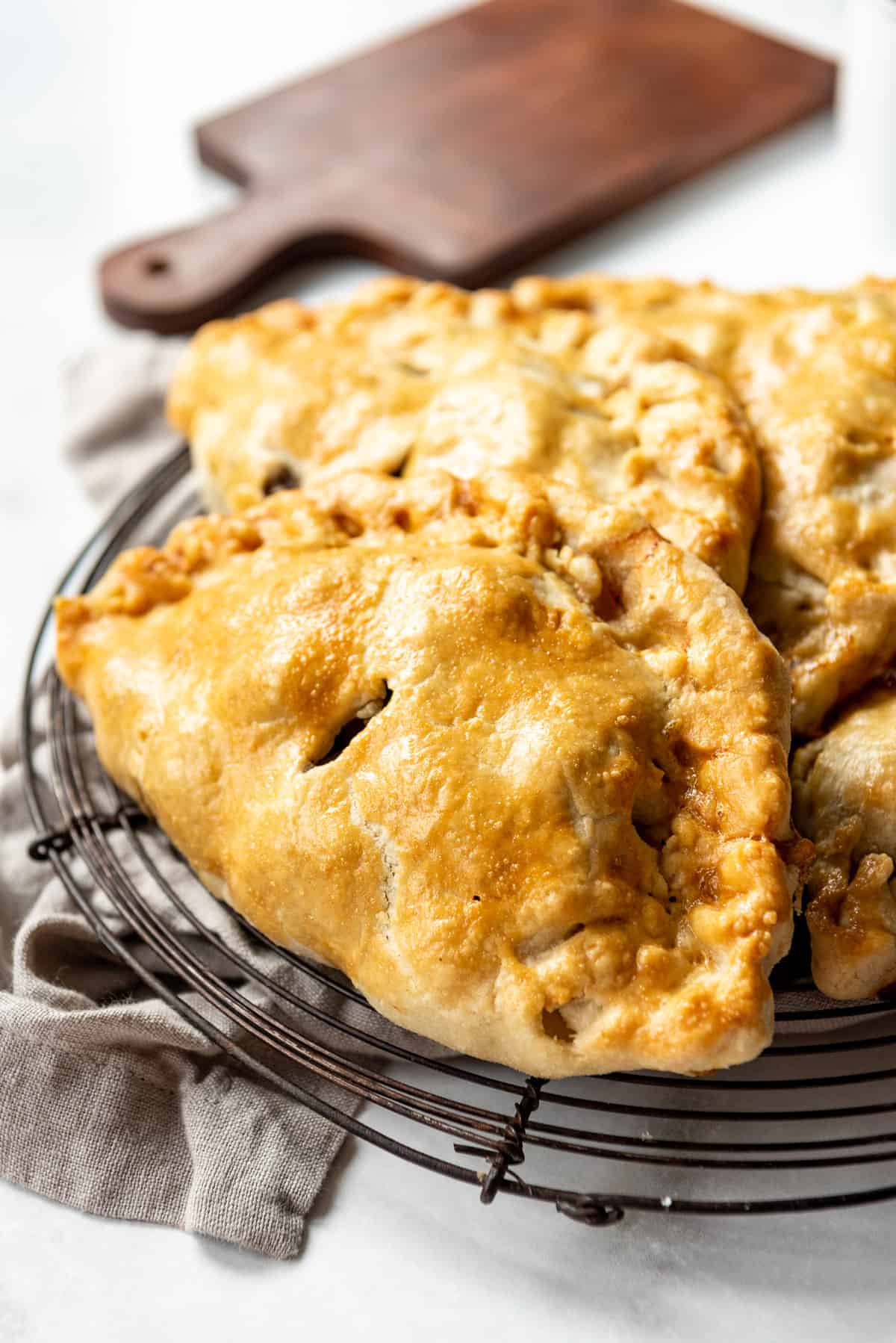
Ingredient Notes
- Beef: Skirt steak or sirloin steak is cut into small, bite-size pieces for traditional pasties. Ground beef can work in a pinch though if that's all you have on hand.
- Vegetables: A real, authentic Cornish pasty uses what they call a "Swede" or "turnip" but we here in the states know as a rutabaga as the principal veggie. But in pasty-obsessed Michigan, you might see carrot, turnip, or parsnip used instead.
- Potatoes: We like waxy potatoes like Yukon Golds or red potatoes for making pasties. They hold their shape and don't break down as much as russett potatoes during the baking process.
- Fat for the crust: A true, traditional Cornish pasty would be made with lard in the crust. I used a combination of butter and shortening instead, mostly because I don't like the flavor that lard gives.
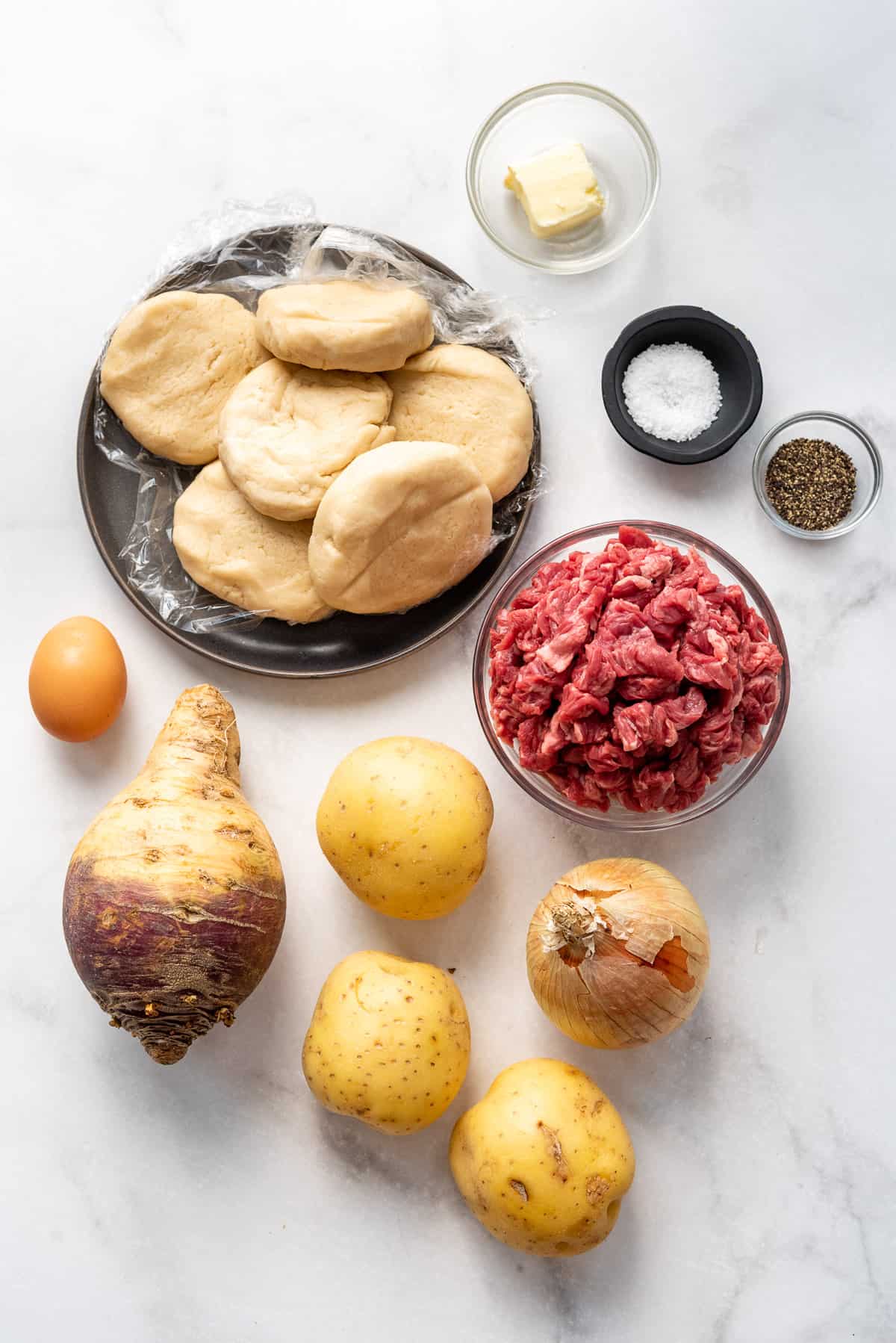
How to Make this Recipe
Start with your pastry by combining flour, salt, butter, and shortening in a large food processor (affiliate link) and pulsing until it the butter and shortening are the size of small peas. This can also be done by hand using a pastry cutter.
Add cold water, a little at a time, until the dough comes together, then divide it into discs and let it rest in the fridge until you are ready to roll it out.
Lightly flour a clean surface, then roll out one disc of pastry dough at a time.
Fill ½ of the circle of pasty dough with finely diced potato, rutabaga, and onion, then season them with salt and pepper.
Top the potatoes with your finely diced skirt steak and season again with salt and pepper. I don't mix them because I like having the meat on top so the sharper corners of the hard vegetables don't poke through my crust as I'm shaping the pasties.
Fold the crust over to encase the meat, then use your fingers to fold the bottom crust over the top crust along the edges, crimping as you go. You could also just crimp with a fork, but it's not traditional. My crimping technique definitely has room for improvement, but it's kind of a fun thing to try!
Transfer the finished pasties to a baking sheet lined with parchment paper and brush with a simple egg wash, then slice a small gash in the top to vent steam while the pasty bakes.
Bake for 45-55 minutes until they are golden brown on the outside, then remove and cool a bit before enjoying!
Recipe FAQ's
Where have I heard of Cornish pasties before?
My first exposure to Cornish pasties was probably while reading the Harry Potter books, where Ron helps himself to a pasty when they are served for lunch on the day of the Third Task for the Tri-Wizard Tournament in the 4th book, Harry Potter and the Goblet of Fire. They are also served at the Three Broomsticks Inn with a garden salad on the side in Hogsmeade in the Wizarding World of Harry Potter. So I recommend enjoying your Cornish pasties with a glass of Homemade Butterbeer!
Can I fill these with other meat or vegetable fillings?
Absolutely. Feel free to get creative and use diced chicken or pork, or other veggies. Root veggies do well because they take a while to bake and don't release too much liquid. Sweet potato, asparagus, and peas would all be good choices.
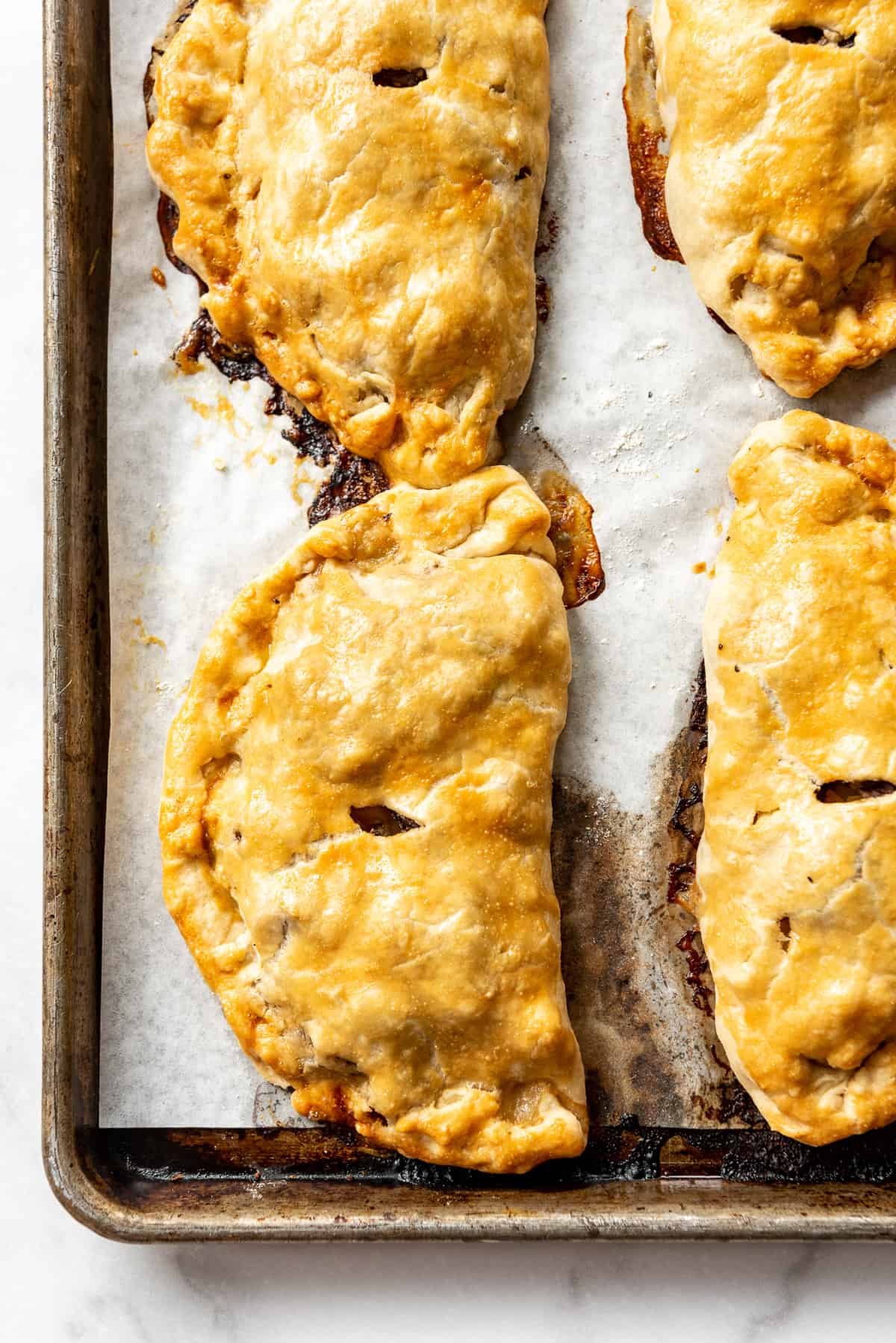
Recipe Tips
- Freezing: These can be frozen baked or unbaked. If freezing the unbaked pasties, don't bother thawing them first. Instead, just add another 15-20 minutes to the baking time. They freeze well for 2-3 months.
- Meat on top: If you roll your pastry dough too thin, you run the risk of it tearing when you fold it over the fillings, especially if there are poky pieces of rutabaga or potato. That's why the meat always goes on top!
- Proper crimping technique: You could crimp the edges with a fork, but the traditional way is to twist them closed. To be considered a proper cornish pastry, they are supposed to have at least 17 but no more than 21 crimps! Although technically they are also supposed to be made in Cornwall as well...
More Recipes Like This
- The BEST Homemade Chicken Pot Pie Recipe
- The Pioneer Woman's Cowboy Quiche
- Shepherd's Pie
- Beef Steak Pie
Did you make this recipe?
Let me know what you thought with a comment and rating below. You can also take a picture and tag me on Instagram @houseofnasheats or share it on the Pinterest pin so I can see.
Shortcrust Pastry
- 3 cups all-purpose flour
- 1 teaspoon table salt
- 12 Tablespoons salted butter cold, cut into cubes
- 8 Tablespoons shortening
- ⅔ cup cold water
Filling
- 1 pound beef skirt steak or sirloin cut into small cubes
- 1 pound red or yukon gold potatoes peeled and diced small (about 1 cup of ¼-inch pieces)
- ¾ cup rutabega or turnip or parsnip but not carrots peeled and diced small (same size as potato)
- ½ onion chopped (about ¾ cup)
- 1 ½ to 2 teaspoons coarse kosher salt
- 1 to 1 ½ teaspoons freshly ground black pepper
- 2 Tablespoons salted butter cut into small pieces
- 1 egg beaten
Pastry
-
Combine flour and salt in a bowl or food processor. Cut the cold butter and shortening in using a pastry cutter or food processor until the mixture resembles coarse crumbs. Gradually add the water, mixing it in with a fork or by pulsing the food processor, just until the dough starts to come together in a clump.
-
Squeeze the pastry dough into a ball and divide it into 6 equal portions. Squeeze them into discs and cover or wrap with plastic wrap. Set these in the refrigerator for at least 1 hour to chill thoroughly and to allow the gluten in the dough to relax, which will make them easier to roll out.
Assembly
-
Preheat oven to 375 degrees F. Line 2 baking sheets with parchment paper.
-
Roll out each disc of dough into a large, thin circle on a floured surface.
-
Evenly divide the potatoes, rutabega, and chopped onion between each disc, piling them into a half-circle shape on the bottom half of each circle of dough.
-
Add the cubed meat on top of the root vegetables, then season generously with salt and pepper. It's okay to be a little aggressive on the pepper - traditional pasties have a bit of heat from this spice. Dot the meat with 2-3 small pieces of butter.
-
Carefully fold the dough over the meat and vegetables. Use your fingers to fold the edges of the crust over and crimp them together, then transfer the pasty to the prepared baking sheet.
-
Brush the beaten egg all over the top of each pasty, including the edges of the crust, then use a sharp knife to cut a small slit in the top crust for venting.
-
Bake for 45-55 minutes until golden brown on the outside. Cool slightly before eating.
- In Michigan pasties are often enjoyed served with ketchup, but we like them plain. While traditional Cornish pasties are made with cubed beef skirt steak or sirloin, you could also use crumbled up (uncooked) ground beef instead, which is common in the States.
- Some people will add herbs like thyme or rosemary, or even add garlic powder, but that's not a traditional cornish pasty. That's not to say those wouldn't be delicious, but in the interest of authenticity I wanted to make as traditional of a cornish pasty as I could. If you want to add herbs, I would try ½ to 1 teaspoon each of dried herbs.
- Again, while not traditional, you could replace the steak with cubed chicken or even make a vegetarian version using lentils or chickpeas. Or add in other vegetables like bell peppers.
Calories: 814 kcal | Carbohydrates: 65 g | Protein: 26 g | Fat: 51 g | Saturated Fat: 23 g | Polyunsaturated Fat: 7 g | Monounsaturated Fat: 17 g | Trans Fat: 4 g | Cholesterol: 145 mg | Sodium: 1272 mg | Potassium: 706 mg | Fiber: 4 g | Sugar: 2 g | Vitamin A: 866 IU | Vitamin C: 18 mg | Calcium: 47 mg | Iron: 5 mg
Adapted from Hedgecombers.
More States I Have Visited in my American Eats Series
Alabama • Alaska • Arizona • Arkansas • California • Colorado • Connecticut • Delaware • Florida • Georgia • Hawaii • Idaho • Illinois • Indiana • Iowa • Kansas • Kentucky • Louisiana • Maine • Maryland • Massachusetts • Michigan • Montana • New York • Oregon • Puerto Rico • South Carolina • South Dakota • Texas • Utah • Wisconsin
Related Recipes
About the author

Hi, I'm Amy
I enjoy exploring the world through food, culture, and travel and sharing the adventure with mostly from-scratch, family friendly recipes that I think of as modern comfort cooking.
Learn More
Source: https://houseofnasheats.com/cornish-pasties/
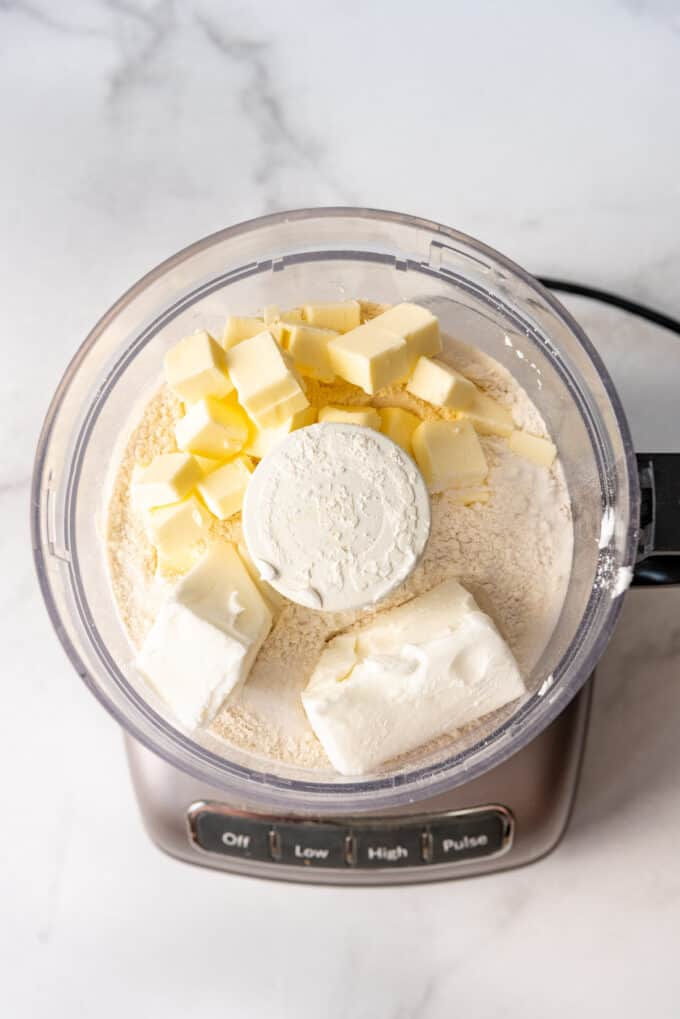


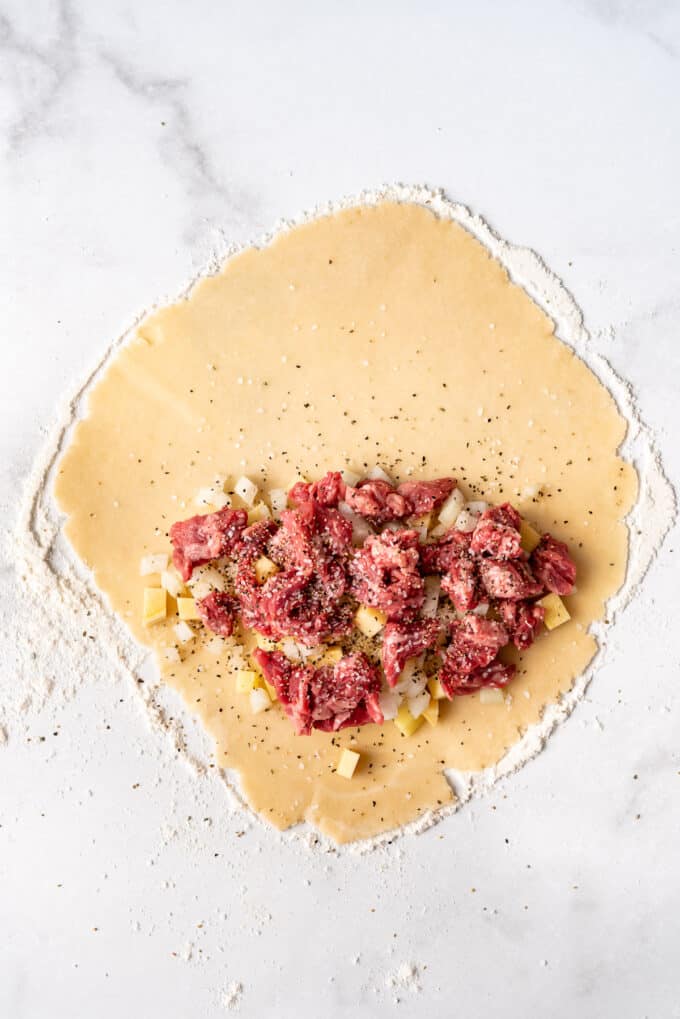
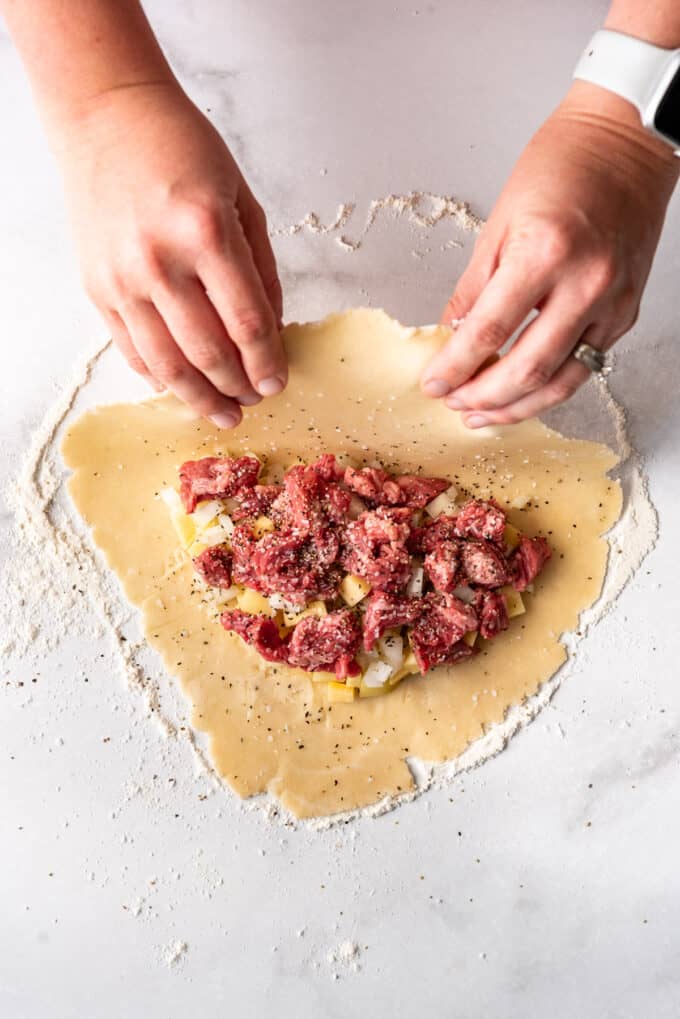
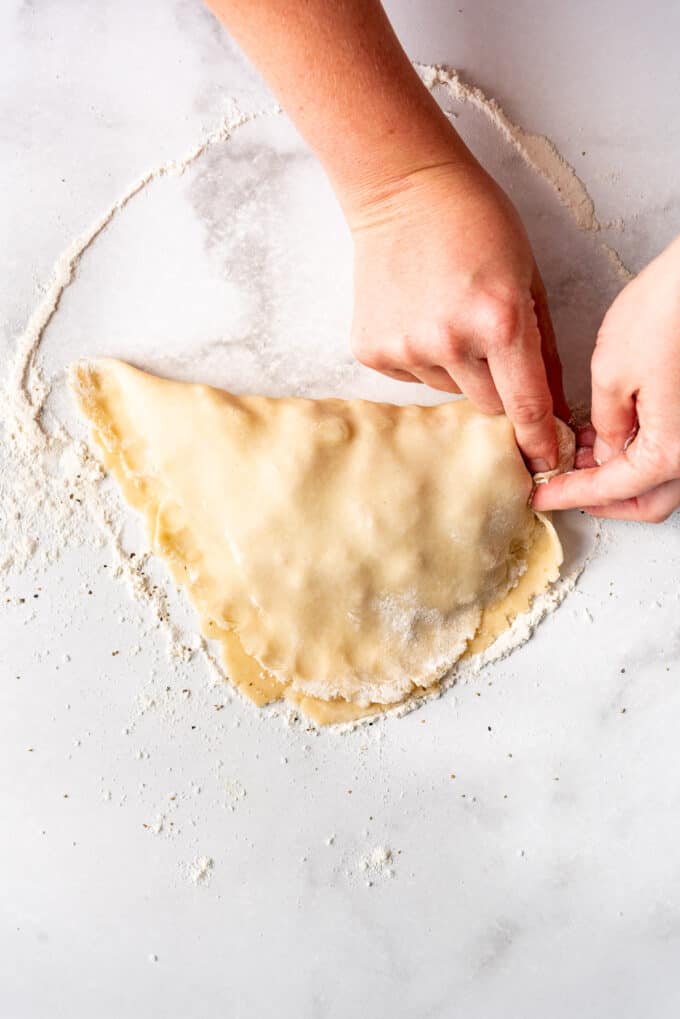
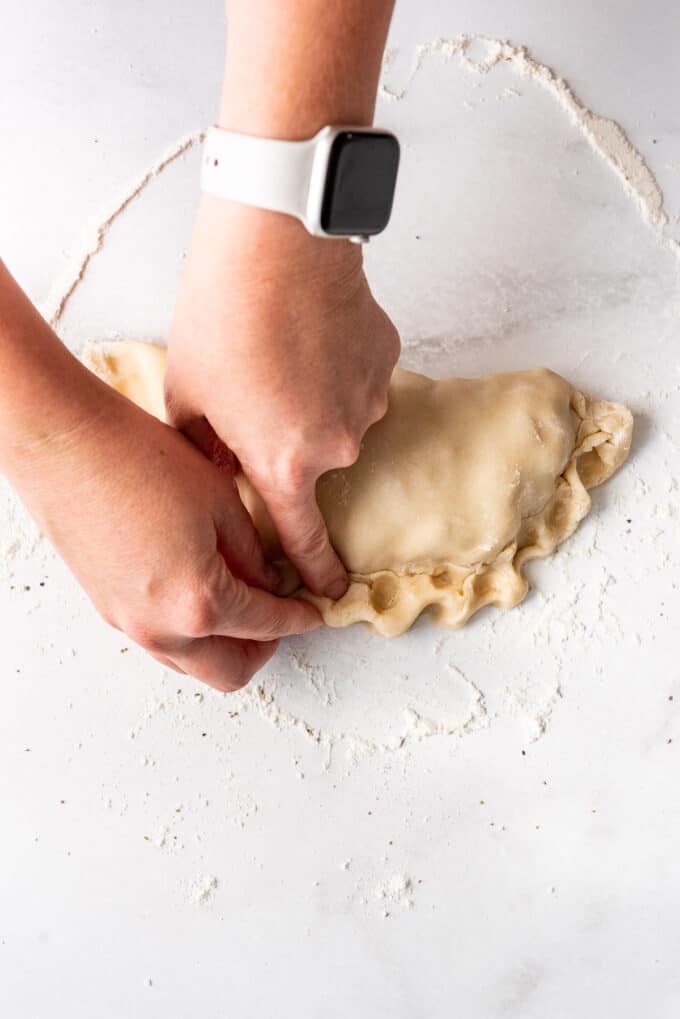
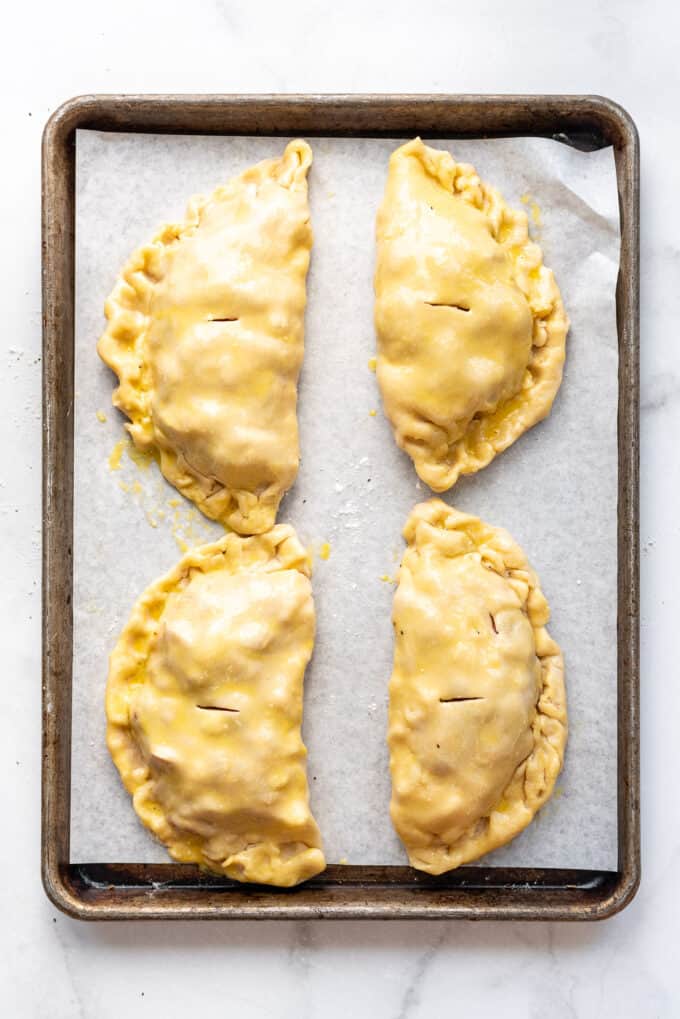
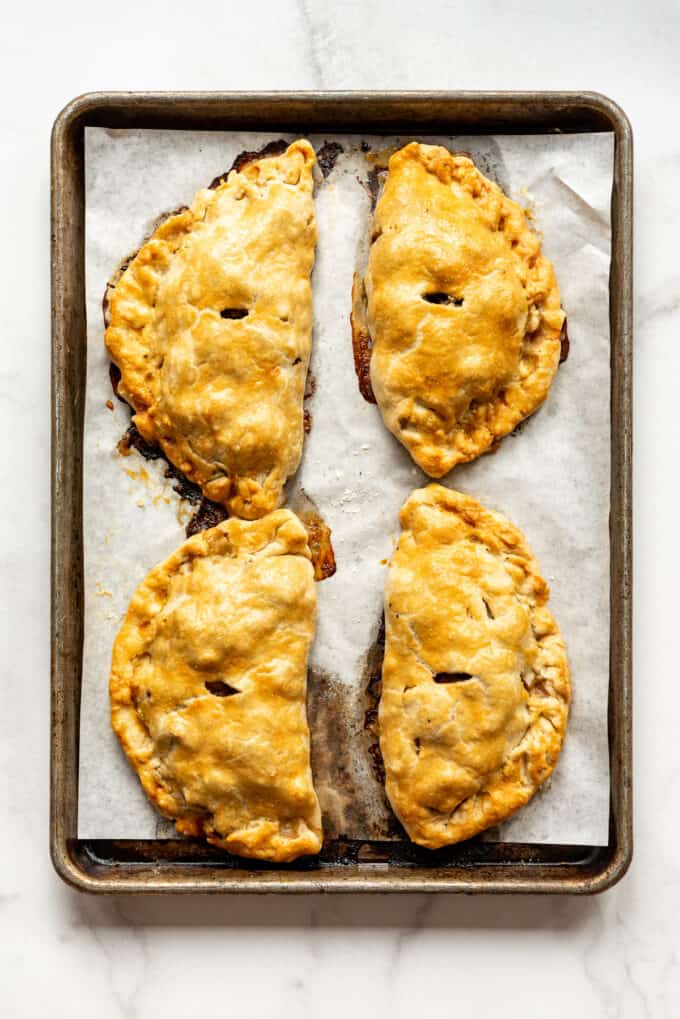
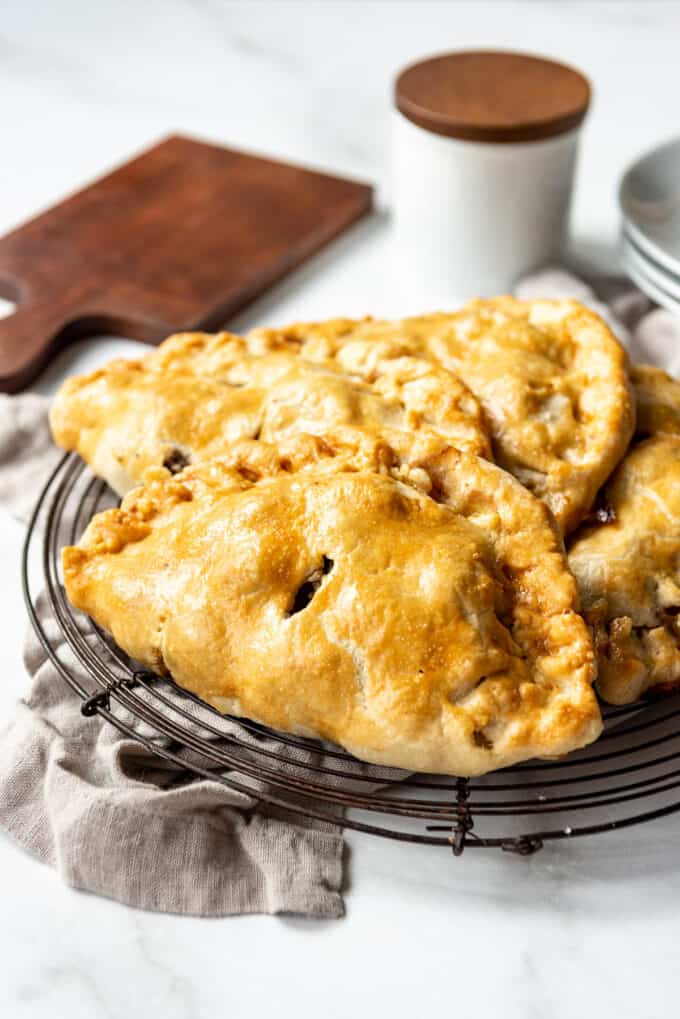
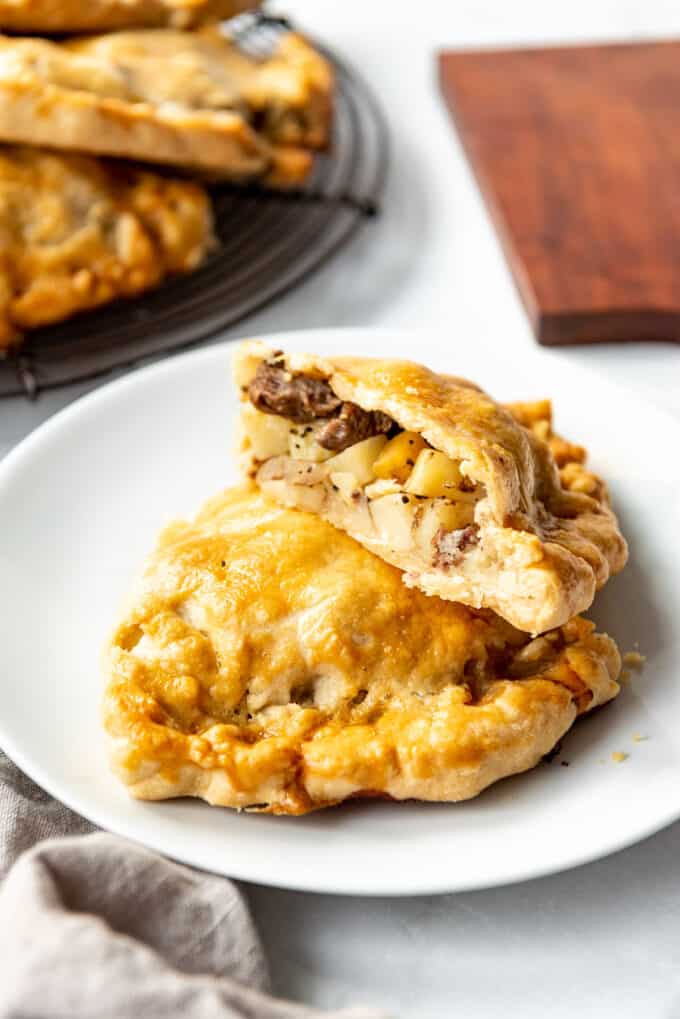
0 Response to "Cornish Pasty Recipe Ground Beef No Cook Meat"
Publicar un comentario